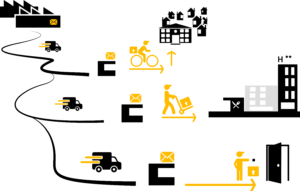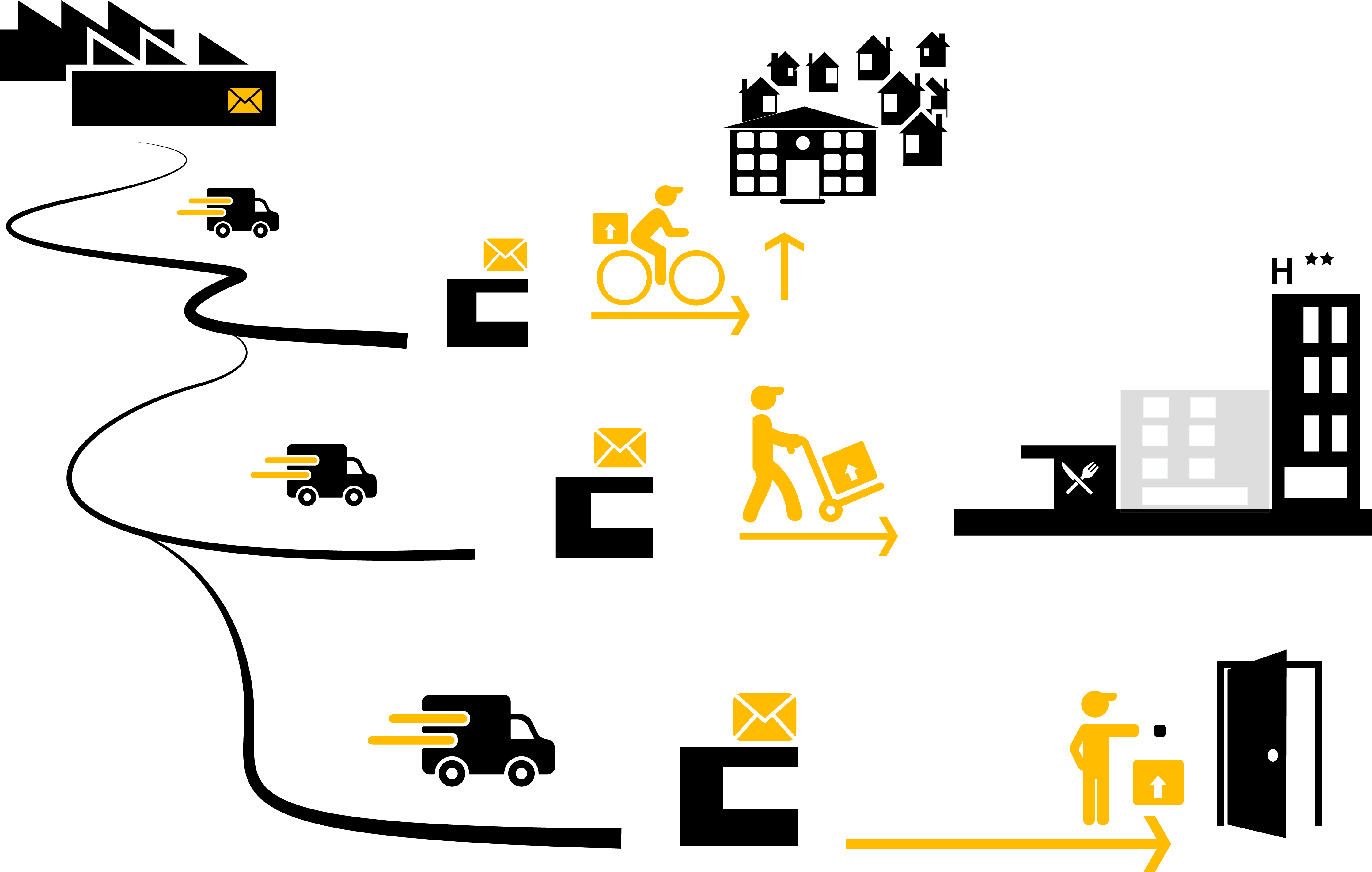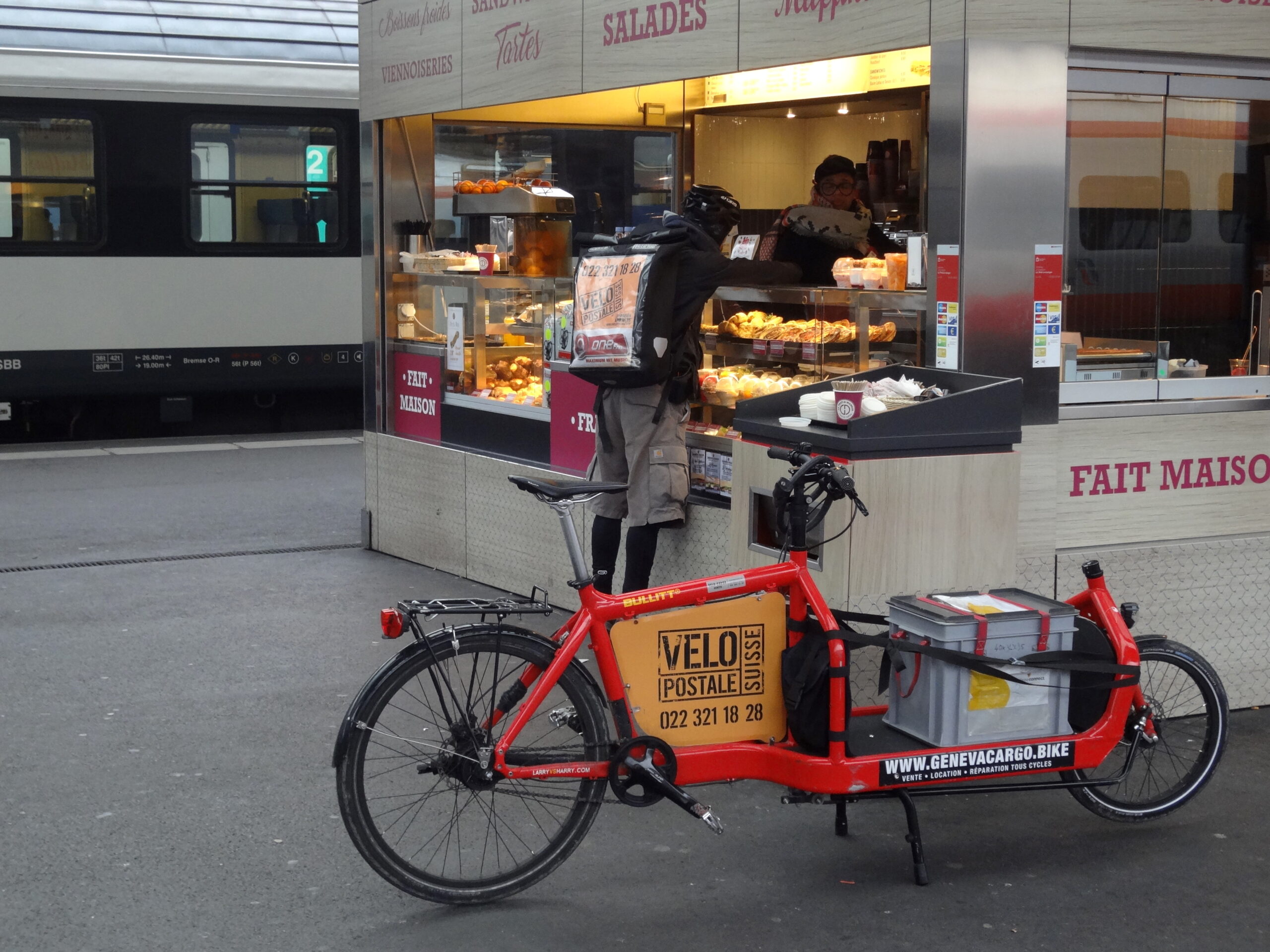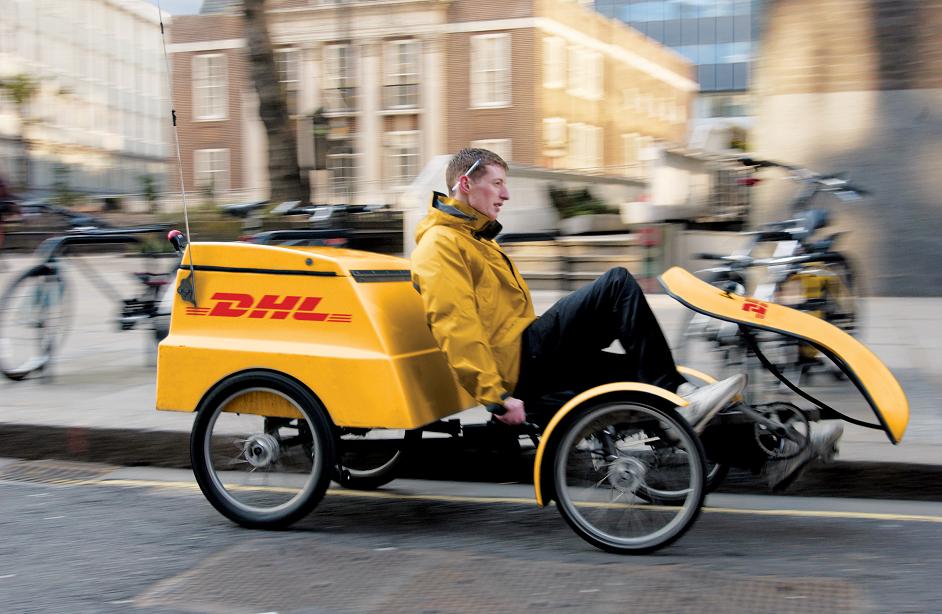AC07 MANAGEMENT OF URBAN DELIVERY
More sustainable and safe urban delivery in the city

Aim
Adapt to the increase in this type of transport in cities, achieving a more sustainable and safer last mile transport.
Why?
The distribution of goods is one of the most important activities within a city’s mobility system. Most of the goods consumed in a city come from outside the city. Although it is not one of the first systems to be considered when dealing with a city’s mobility problems, its importance is capital, and is growing rapidly due to changes in consumer habits, as e-commerce increases.
This increase in the demand for this type of service, and the lack of measures to adapt cities to it, is a major challenge due to the serious impacts it generates: noise, pollution, occupation of public space and road safety problems.
How?
A few examples of measures to improve the sustainability of freight transport in the city are proposed here, but all of them must start from one first and indispensable: ensuring the participation of transport companies and traders. Without this premise it has proved impossible to achieve results, as there are multiple conflicting interests and different scenarios.
On the other hand, like any other problem related to mobility, no single measure can have results, but it is necessary to combine different solutions.
Measures affecting the distribution of goods are usually classified into three groups: normative, technical and logistical. It is a combination of these three types that will achieve results, but each of them corresponds to an actor within the system.
► Preliminary measures: commitment of the different actors:
• Create working groups between the administration and the different stakeholders to propose solutions.
• Organise information days or forums to raise awareness of the proposed solutions.
► Legal measures:
• Restrictions on access time to certain areas for loading and unloading. An example of a measure could be night-time delivery with silent vehicles.
• In businesses or areas where night-time delivery is not possible, time restrictions on daytime delivery should be considered.
• Different permits and standards for less polluting or noisy vehicles.
• Supports for the purchase of more sustainable vehicles for last mile delivery.
• Oblige to have storage areas in commercial premises.
► Management of parking for loading and unloading:
• Pre-booking of spaces for loading and unloading.
• Limitation of the time of use of the spaces.
► Logistical measures:
• Courier lockers. Oriented to the private market and mainly to online commerce, these are areas where different courier companies leave small packages in lockers that can then be collected by individuals. These consignments will be in designated zones according to their access and parking facilities. Unlike Pick-up centres, which are usually shops, these lockers will be placed in a way that is consistent with the other measures for parking management, road hierarchization, pedestrian itineraries, etc., and will therefore serve to increase the effectiveness of these other measures.
• Proximity distribution areas. Installation of a transfer platform on which goods are unloaded from heavy vehicles and placed on trolleys, wheelbarrows, electric vehicles or bicycles for last mile distribution. It can also function as a short-term storage and courier locker
Operation of courier lockers and proximity delivery areas

Different distribution systems in vehicles without engine. Source: see link of the examples



City Scale Intervention

ISSUES AFFECTED
SUITABLE FOR COMBINING WITH OTHER SOLUTIONS
Measuring elements
Indicator
Main: CO2 reduction by switching from motor vehicles to more sustainable modes
Secondary: % of reduction in km travelled in motor vehicles
Unit
g CO2
%
Minimum Goal
50 % of trips from MV to sustainable modes in designated zones
Objetivo deseable
70 % of trips from MV to sustainable modes in designated zones
Measure method / Formula
Anual Mobility Survey
∆g CO2=A x [B – C] x D
A: % of reduction in km travelled in motor vehicle
B: MV CO2 Emission Factor (g CO2/km)
C: Non polluting vehicle CO2 Emission Factor (g CO2/km)
D: Total km travelled
The formula may vary depending on available data.
PLANNING LEVEL
General Planning
Development Planning
Urbanization Detailed Design
Construction Detailed Design
PEOPLE INVOLVED
Local Officials
Planning and design team
Traders and Shop Owners
Neighbourhood communities
Associations and cooperatives
POSIBLE ACTIONS DEVELOPED BY THE ADMINISTRATION:
∙ Collaboration and support from distribution companies and retailers is crucial
∙ The location of loading and unloading areas, or proximity distribution areas, is critical.















